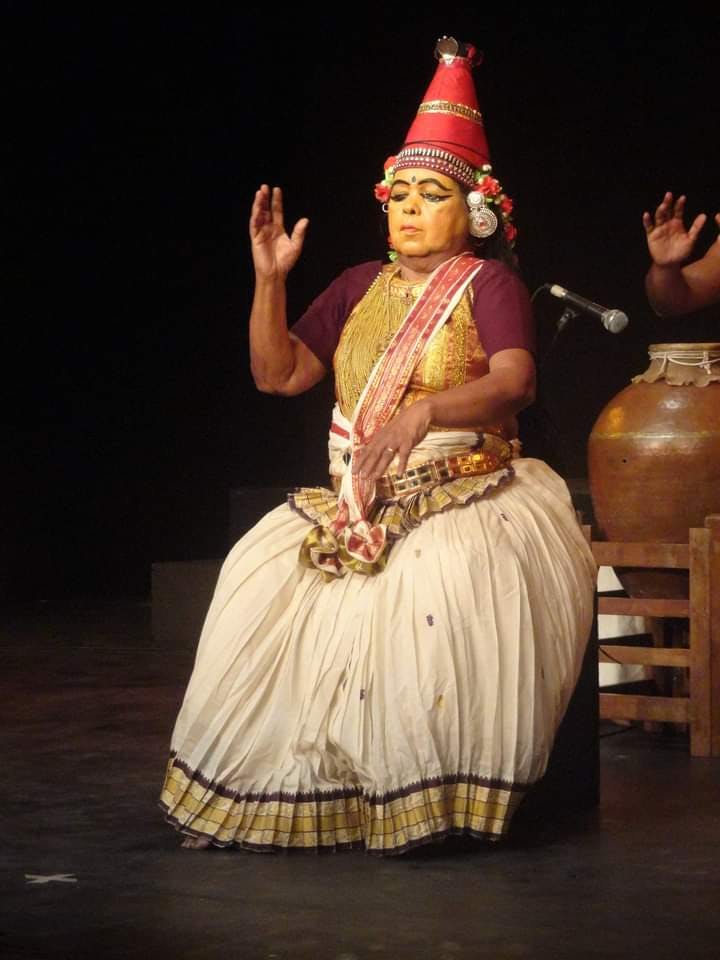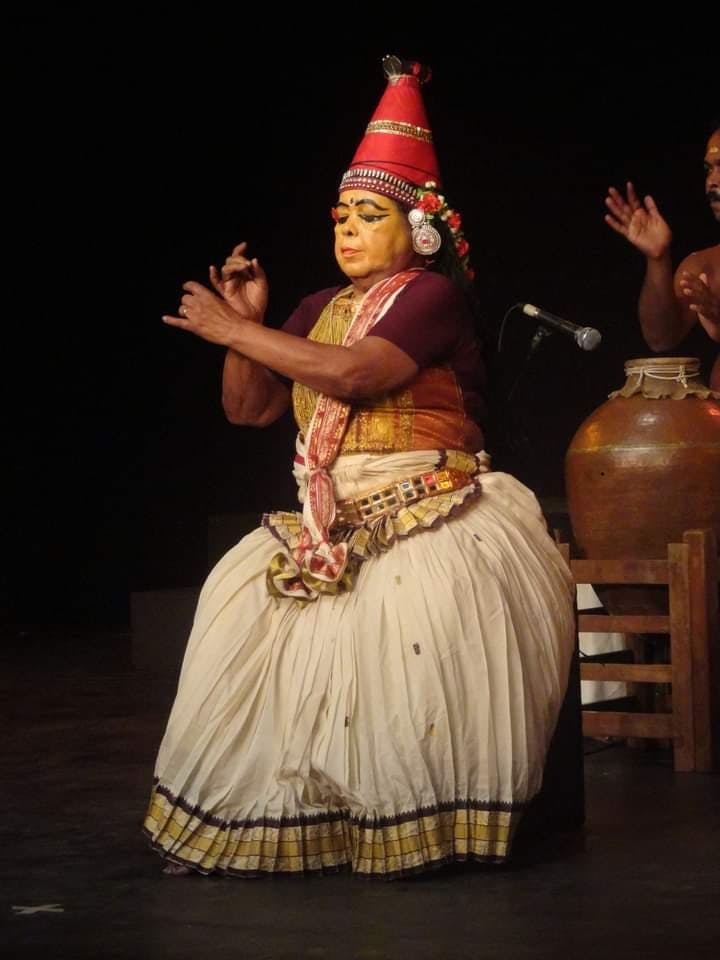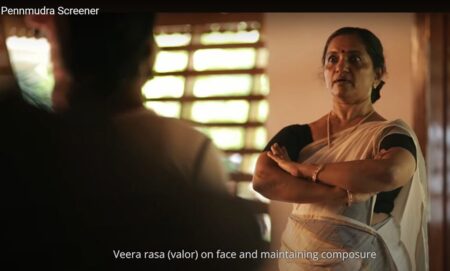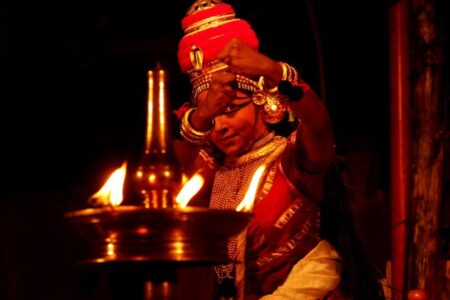The 82-year-old Nangiarkoothu artist has recently received Kalamandalam puraskaram for Koodiyattam.
Tradition is not the worship of ashes but the preservation of fire,” said composer Gustav Mahler. This rings true in the case of Sarojini Nangiyaramma, the latest recipient of the Kerala Kalamandalam award in Koodiyattam. One of the senior-most Nangiarkoothu artists, Nangiyaramma is known for her contribution to the Indian theatre, Koodiyattam and the zest with which she helped preserve a great tradition. For starters, Nangiarkoothu is a derivative of the age-old Sanskrit theatre Koodiyattam.

A purist with strict adherence to the traditional mores of the art form, this octogenarian performs with elan and ease even today. She was the first female artist to receive the central Sangeet Natak Akademi award in 2015.
Nangiyaramma was born into Edanad Nambiar Madhom, a traditional family of Koodiyattam performers, near Aluva in Kerala. She started learning Nangiarkoothu at age five; trained by her mother, as was the tradition those days. At seven, she had her arangetram (first stage performance) at the Edanad Bhagavathy temple. Her father, Ravunni Nambiar, was a well-known figure in the Koodiyattam circles. “Those days, traditional Koodiyattam families gave more importance to training the children in the art form rather than their academic education, ” she remembers. “I used to accompany my mother to all her performances and could not continue my school education after the eighth standard.”
The Charm of an Ancient Grammar
Nangiarkoothu is a solo female performance based on Sree Krishna Charitam (tales of Lord Krishna) starting from the origin of the Kingdom of Mathura to the abduction of Krishna’s sister Subhadra. In the second act of Chera King Kulasekhara Varman’s play Subhadra-Dhananjay, Nangiarkoothu is presented as ‘Nirvahanam’ or the pre-story recital by Kalpalathika, the maid-companion of Subhadra. The actress plays various characters in the narrative and enacts the story through a highly formalised system of hand gestures, expressions of rasa (emotion).
In spite of such intricate charm, the art form gained popularity only in the past 30 years, thanks to the strenuous efforts of maestros such as Ammannur Madhava Chakyar and Paimkulam Rama Chakayar and institutions such as the Ammannur Gurukulam in Irinjalakuda and the Kerala Kalamandalam.
Traditionally, Nangiarkoothu was presented in Koothambalams or temple theatres within the premises of Hindu temples. As a staunch traditionalist, Sarojini Nangiar performs only in temples and has been performing Nangiarkoothu continuously at the Tripunithura Poornathrayeesa Temple for the past five decades. She is the only Nangiar who has performed in temples across Kerala either as a Nangiarkoothu artist or as an accompaniment.
Sarojini Nangiar belongs to a generation of artists who started their careers before the renovations and modifications arrived in Koodiyattam and Nangiarkoothu. Perhaps, the only occasion she performed outside a temple was during the first three years of Kerala’s Tourism Week celebrations from 1980, an association she later discontinued. In traditional terms, Sree Krishna Charitam could be staged only inside a Koothambalam. This belief has prevented her from attempting new choreographies and adapting to the changes in Koodiyattam costumes that happened in the past decades. That said, Sarojini Nangiar’s dedication to the art form has helped establish herself as a leading Koodiyattam performer.
All for Tradition
As was the norm, the Nangiar should accompany artists in Prabandham Koothu (a variant of Chakyarkoothu) as well as Koodiyattam in keeping rhythms on small symbols and reciting slokas. As a family custom, Sarojini Nangiar’s family used to accompany performances of the famed Mani and Pothiyil families. She has associated with all veteran Chakyars on stage, except Ammannur Chachu Chakyar.

Sarojini Nangiaramma has also performed with legends such as Painkulam Rama Chakyar, Mani Madhava Chakyar and Ammannur Madhava Chakyar. Her sons Kalamandalam Narayanan Nambiar and Edanad Ramachandran Nambiar are mizhavu (a percussion instrument made from copper) artistes.




